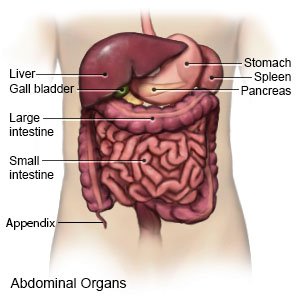Rectal Exam Under Anesthesia (Eua)
Medically reviewed by Drugs.com. Last updated on Aug 4, 2025.
AMBULATORY CARE:
What you need to know about a rectal EUA:
Rectal EUA is used to look for problems in your anus, rectum, or surrounding area. You may need a rectal EUA because of hemorrhoids, abnormal bleeding, a mass, or other problems. This exam helps your healthcare provider do a complete examination of your rectum. A biopsy may be taken if needed.
 |
How to prepare for a rectal EUA:
- Your healthcare provider will talk to you about how to prepare for the procedure. He or she may tell you not to eat or drink anything after midnight on the day of your procedure. Arrange for someone to drive you home when you are discharged.
- Tell your provider about your current medicines. He or she will tell you if you need to stop any medicine for the procedure, and when to stop. He or she will tell you which medicines to take or not take on the day of your procedure. Arrange for someone to drive you home when you are discharged.
- You will need to empty your bowels before the exam. Ask your healthcare provider for specific directions.
What will happen during a rectal EUA:
- You may be given general anesthesia to keep you asleep and free from pain during the procedure. You may instead be given regional anesthesia to numb the area, or light sedation. With regional anesthesia, you may still feel pressure or pushing during the procedure, but you should not feel any pain.
- Your healthcare provider may use a lubricated, gloved finger to check your anus. He or she may instead use a scope with a camera to examine your rectum and lower intestines.
What to expect after a rectal EUA:
You may have slight bleeding for the first few days. This is normal. You will usually be able to go home the same day. You may be able to go back to work and your usual activities within a few days. Your healthcare provider will go over the results with you.
Related medications
Risks of a rectal EUA:
You may bleed more than expected. You may have tissue damage in or around your anus or rectum.
Call your doctor if:
- You have a fever.
- You have pain that does not get better with medicine.
- You have more blood than expected in your bowel movement.
- You have questions or concerns about your condition or care.
Medicines:
You may need any of the following:
- Acetaminophen decreases pain and fever. It is available without a doctor's order. Ask how much to take and how often to take it. Follow directions. Read the labels of all other medicines you are using to see if they also contain acetaminophen, or ask your doctor or pharmacist. Acetaminophen can cause liver damage if not taken correctly.
- NSAIDs , such as ibuprofen, help decrease swelling, pain, and fever. NSAIDs can cause stomach bleeding or kidney problems in certain people. If you take blood thinner medicine, always ask your healthcare provider if NSAIDs are safe for you. Always read the medicine label and follow directions.
- Take your medicine as directed. Contact your healthcare provider if you think your medicine is not helping or if you have side effects. Tell your provider if you are allergic to any medicine. Keep a list of the medicines, vitamins, and herbs you take. Include the amounts, and when and why you take them. Bring the list or the pill bottles to follow-up visits. Carry your medicine list with you in case of an emergency.
Self-care:
- Keep your anal area clean. After a bowel movement, wipe with moist towelettes or wet toilet paper. Dry toilet paper can irritate the area. Wear a sanitary pad to absorb bleeding and keep the area clean and dry.
- Apply ice on your anus for 15 to 20 minutes every hour or as directed. Use an ice pack, or put crushed ice in a plastic bag. Cover it with a towel before you put it on your skin. Ice helps prevent tissue damage and decreases swelling and pain.
- Take a sitz bath. A sitz bath can help decrease pain and swelling. Do this 3 times a day, and after each bowel movement. Fill a bathtub with 4 to 6 inches of warm water. You may also use a sitz bath pan that fits inside a toilet bowl. Sit in the sitz bath for 15 minutes.
Follow up with your doctor as directed:
Write down your questions so you remember to ask them during your visits.
© Copyright Merative 2025 Information is for End User's use only and may not be sold, redistributed or otherwise used for commercial purposes.
The above information is an educational aid only. It is not intended as medical advice for individual conditions or treatments. Talk to your doctor, nurse or pharmacist before following any medical regimen to see if it is safe and effective for you.
Further information
Always consult your healthcare provider to ensure the information displayed on this page applies to your personal circumstances.
